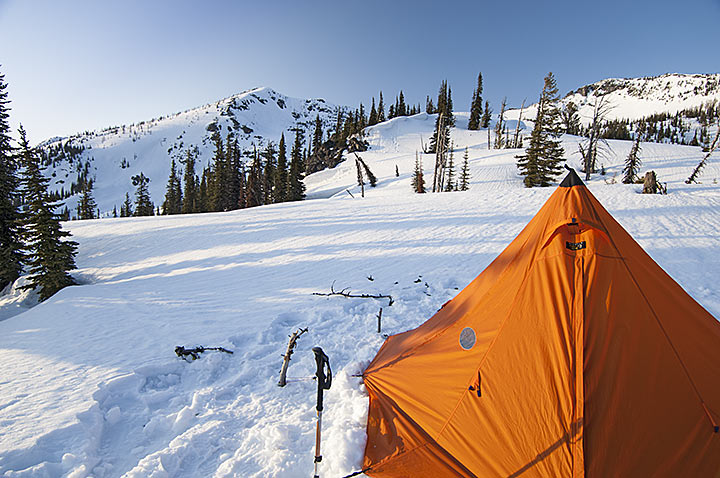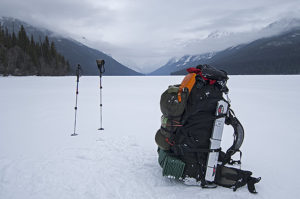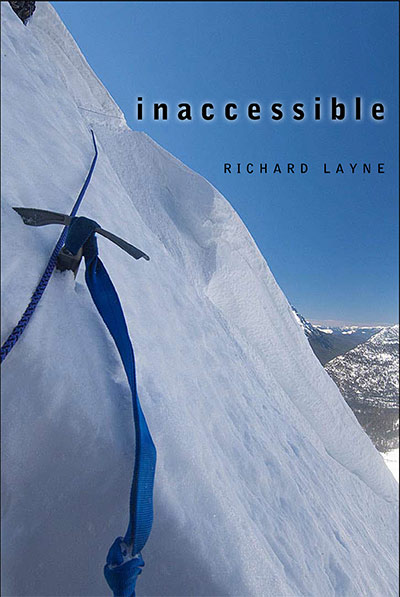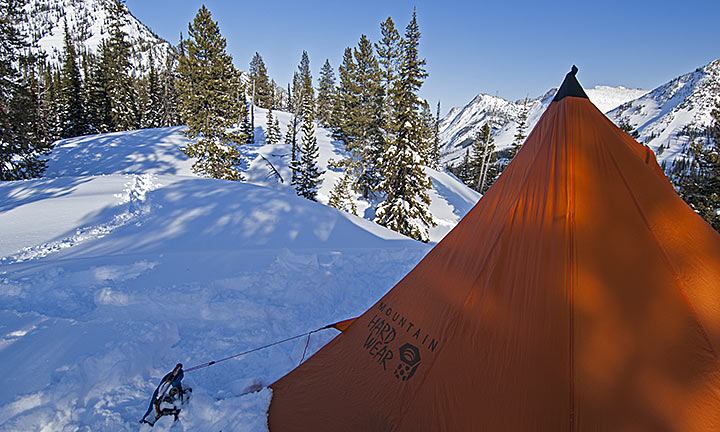
The Scott Antarctic Polar Expedition of 1911-1913 used the teepee type, single pole, and single walled tent. I used a similar four-season tent throughout my solo 150-mile winter trips in Montana and Idaho’s Selway-Bitterroot Wilderness.
During my first subzero cold with the tent, I discovered that the heat congregated above my head just before making a too quick exit through the single wall. Whenever I sat up there was virtually no heat from the floor up to my neck. This was a critical defect, since one normally sits up to sip hot drinks and eat hot meals. The best I could do was to lower the tent, an action that partly solved the problem, but increased another problem, which I will soon describe.
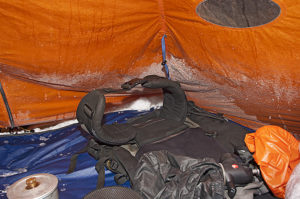
In addition, the floor space 1.5 feet away from the tent’s edge was useless due to melting occurrences on the walls, which happened twice a day with the use of the stove. The built up frost on the tent walls soon became dripping, but mostly pouring rivulets of water streaming onto the tent’s footprint and into my gear. As if that was not enough, the center of the tent was useless because of the single pole occupying that area. Due to the restricted area, practical usage would have prevented it from ever being more than a cramped two-man tent rather than its four-man tent status.
Eventually I lowered the single pole to bring the built up heat in the tent down to my head and torso. Unfortunately, the lesser angle and lowered tent walls removed more of the living space, which set me up for another cardinal “do not”. No part of the bedroom should ever touch a tent wall. In a winter camp, a damp sleeping bag is a step toward freezing to death. In a double walled tent, the normal tent of today, the moisture on the outer wall also pours, but not into the survival area, umm mostly.
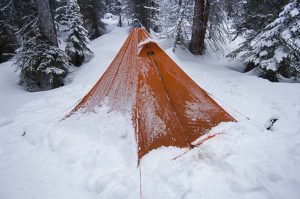
I should mention that the tent of 100 years ago was not waterproof like all of the modern tents, but then Antarctica is the driest continent on Earth, where it never rains. The point I wish to make is that the porous cotton material greatly reduced much of the frost on the walls of yesterday’s tent. There are other distinct advantages to the pyramid tent. Properly setup, piles of falling snow, and there was plenty of that throughout the La Nina winter of 2007-2008, failed to collapse this tent. In another plus, the Scott Expedition, as with other expeditions of that time, demonstrated the strength of the tent against the wind. It handled 90 mph winds!
What convinced me to continue to use the tent in spite of its deficiencies was the phenomenally low weight, something I have no doubt Scott failed to experience. His tents likely weighed in at approximately 50 pounds while mine weighed less than 5 pounds.
In the end, the remaining three men of the five-man Scott Expedition, after attempting to wait out a blizzard for seven days, froze to death. While a mixture of circumstances brought about their demise, lack of food and fuel, with built up moisture in their sleeping gear, another may have been this type of tent.
Finally, I want to note that the manufacturer description of my tent said it was a four-season tent, which I maintain not so much. However, if one could handle insect infiltration, it would make a fine three-season tent. I do not mention the name of the company or the tent because this is a critique of this particular style of tent, which remains readily available with different companies throughout the world.
For my part, after 39 nights of winter use in 2008, I quit the single wall, one-pole tent.
